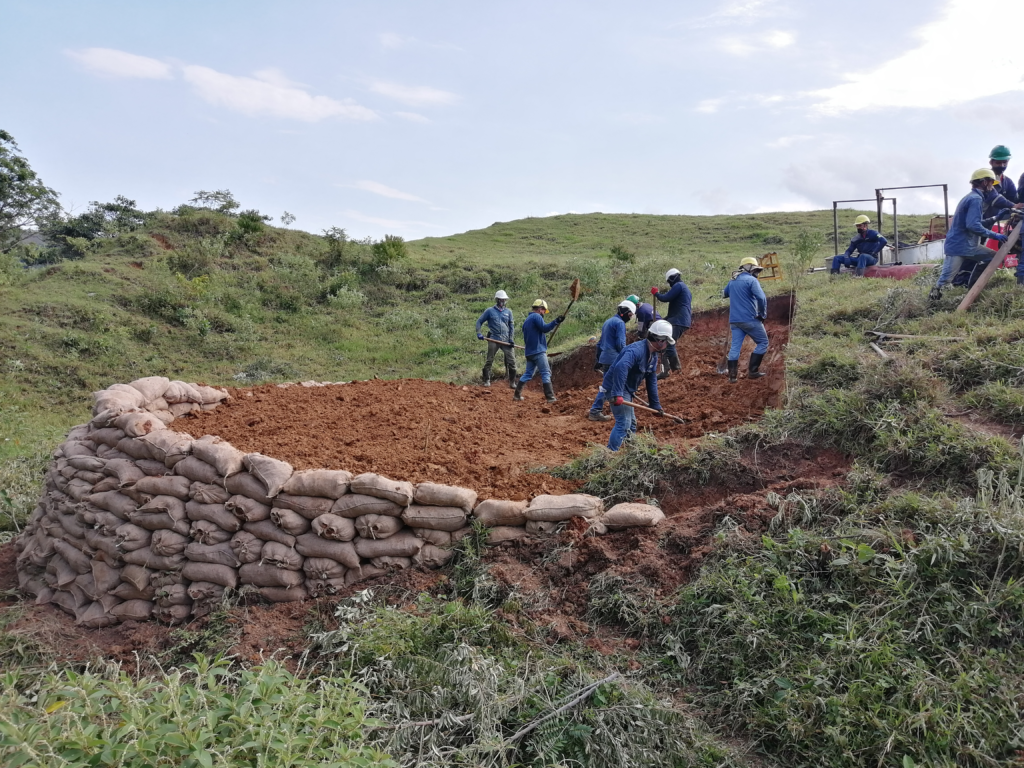JV Article: Outcrop Silver on cusp of Santa Ana resource estimate


The Frias underground mine on Outcrop Silver and Gold’s (TSXV: OCG; US-OTC: OCGSF) Santa Ana land package in Colombia produced 7.8 million oz. of silver at an average recovered grade of 1,300 g/t silver over 25 years ending in 1905, and CEO Joe Hebert believes it is an analogue for just one of the 13 high angle ore shoots the junior has defined on its 36 km2 property.
The company has drilled more than 47,600 metres (284 core holes), and 198 intercepts have yielded a weighted average grade of 1,580 g/t silver-equivalent over an average width of 0.8 metres, which puts Santa Ana, Hebert says, in a narrow group of peers in the top 25th percentile of silver grades globally.
“Of the thirteen primary silver companies in the world, only three — MAG Silver, SilverCrest and Alexco — have grades over 600 grams silver-equivalent per tonne,” he says. “There may be higher ones, but the holy grail for a project at our stage is SilverCrest’s Las Chispas, which has 879 grams. We’re forecasting between 550 and 750 grams for Santa Ana, and with some of our more recent high-grade drill intercepts within, we could be above 600.”

The company plans to release its first resource estimate in November and has an ‘internal guidance’ (following guidelines for disclosure from the British Columbia Securities Commission) for an inferred resource of between 45 and 55 million silver-equivalent ounces.
The 4.0 km by 1.0 km area that will contain the upcoming resource is 12 km from the Frias mine, and will include historic portals and shafts from 14 underground mines active in the Spanish colonial era. The mines, collectively known as the Royal Santa Ana mines, reported production average grades of 4,000 g/t silver over an average width of 1.4 metres.
Hebert, a geologist whose career has included drilling the first hole into ET Blue – now the Goldrush deposit on Barrick Gold’s (TSX: ABX; NYSE: GOLD) Cortez mine project in Nevada – and making a drill discovery of Mahalla on the Jerritt Canyon project when he was with Freeport McMoRan (NYSE: FCX), says what he’s seen so far at Santa Ana is exceptional.
“The excitement about Santa Ana is the stunning grade – and it’s well-distributed grade,” he says. “There is great grade distribution in terms of a potential future mining operation. The grade contours are very well-behaved. If you look at a potential future production level basis, you’ll develop drifts of up to 250 metres long within some of the highest grades in the deposit.”
“What you want is the best grade possible and you want continuity of veins, not veins busted all up by later structure,” he continues. “You want very good rock stability so any stope development can preserve grade, and you can do that because the walls will be stable, and you want multiple faces to work simultaneously. Santa Ana will have up to 15 large high-grade shoots, good grade and structural continuity, and they will be in a compact area of 4.0 km by 1.0 km so that you will have lots of alternatives for the development of simultaneous ore bodies. So from my experience, Santa Ana looks like a mine.”
Santa Ana, 190 km from Bogota and about 206 km from Zijin Mining’s Buritica mine, consists of five or more regional parallel vein systems across a trend stretching 12 km in width and 30 km long.
“It’s a world-class district,” Hebert says. “It has over 60 km of veins – a vein system [of] over 300 km2 – and those numbers put Santa Ana into a category of some of the world-class districts of Mexico, like Fresnillo and Guanajuato.”
The project should also offer a healthy enterprise value dollar per ounce after the resource comes out, Hebert says, pointing to the example of Blackrock Silver (TSXV: BRC; US-OTC: BKRRF). Blackrock put out an inferred resource earlier this year for its Tonopah West project in Nevada of 42.6 million silver-equivalent oz. at a grade of 446 g/t silver-equivalent, which Hebert says gives the company an EV per ounce of about $2.60 or $2.80. At press time Blackrock had a market cap of about $77.4 million compared with Outcrop’s $23.8 million.
“The difference is not having our resource numbers out yet,” Hebert says. “We should have a significant increase in value, and the Blackrock story indicates it could be up to five times.”
The company has three rigs turning and highlights from its latest results included 1,651 g/t silver-equivalent over 8.97 metres starting 232 metres downhole, including 0.66 metres of 15,941 g/t silver-equivalent.
In terms of jurisdiction, the Fraser Institute ranked Colombia 29th out of a total of 84 countries in terms of investment attractiveness in 2021, surpassing Chile (31), Mexico (34) and Peru (42) in a subset of countries in Latin America and the Caribbean. Hebert points to improving security conditions and the government’s track record of permitting mines, noting the country has permitted six in the last eight years.
The company has support of various stakeholders in the community, he adds, and has developed initiatives including supporting micro-cap business startups and adult education programs, and providing medical equipment.
Mine financier Eric Sprott has a 16.9% stake and has invested in three of the company’s private placements since February 2020.
The preceding Joint Venture Article is PROMOTED CONTENT sponsored by Outcrop Silver and Gold and produced in co-operation with The Northern Miner.
Comments